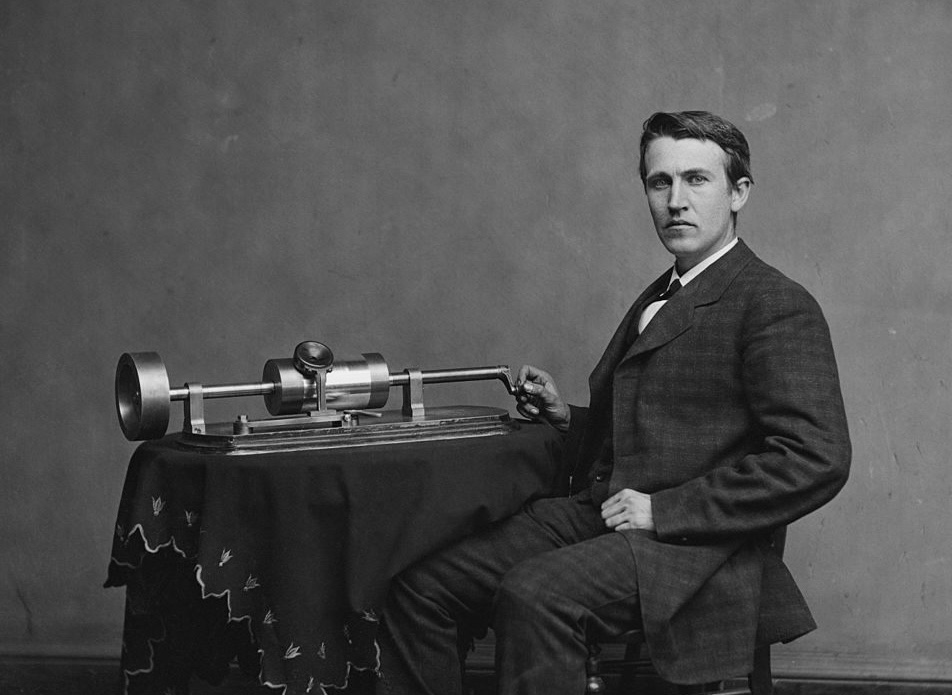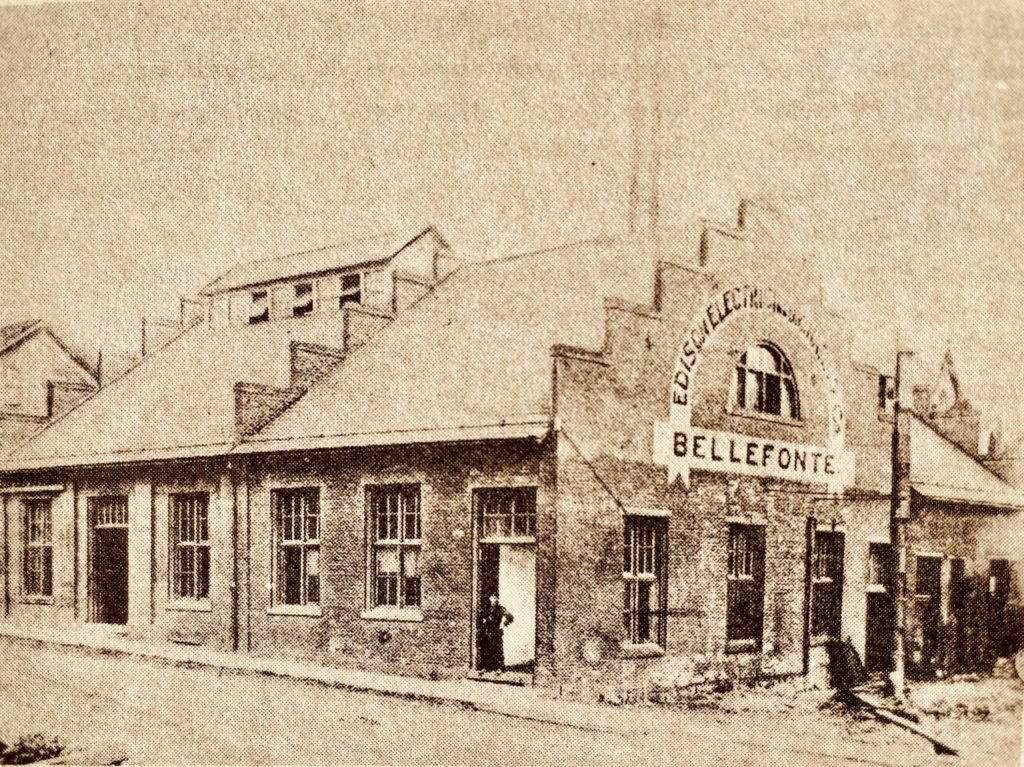
Thomas Edison circa 1870-80. Photo from Library of Congress

Thomas Edison circa 1870-80. Photo from Library of Congress
In October 1879, the world changed forever. From his Menlo Park, New Jersey, laboratory, Thomas Edison finished the first iteration of his newest invention: the incandescent lightbulb.
Several inventors at the time were working on this project, each competing to see who could get the most efficient bulb to market first. The genius of Edison’s bulb lay in his filament and vacuum bulb design. He was able to choose filament materials that would result in an incandescent bulb lasting 1,200 hours, a far cry from his breakthrough filament lasting 14.5 hours. With patents in hand and experience in markets, Edison and his team developed a strategy to bring his new electric light to the world.
Bellefonte’s journey to illumination via Edison’s state-of-the-art system began in 1883. In concert with Edison’s model, the Edison Electric Illuminating Company was chartered, with its power station to be built on the corner of North Water and West Lamb streets. Acting as its first president, George Valentine helmed the company that had raised over $24,000 in stock in order to secure the rights to use Edison’s new bulb. The board of directors for the newly minted company was a “who’s who” of the Bellefonte elite in the late 1800s, with ironmasters, lawyers, merchants and politicians working to make Bellefonte one of the earliest towns to be “electrified” with the Edison method.

As with several of the early towns illuminated using Edison’s invention, it is locally contended that Edison himself came to Bellefonte to observe the operation in early January 1884.
By January 24, the Bush and Brockerhoff hotels were being “wired,” as well as two exhibition lights located in front of the courthouse and another at the “bridge” (likely referring to the Veterans Bridge in Bellefonte today). The idea, as Edison had done in New York and Sunbury a year earlier, was to make a grand spectacle of the first “lighting,” advertising for weeks ahead of the event in an effort to sell skeptical locals on the merits of electric light.
In line with snake-oil salesmen of the time, Edison’s agents would take out ads in local newspapers proclaiming the incandescent lightbulb “is good for all manner of diseases’” and “keeps away measles and chickenpox!” Edison’s invention was even claimed to “rock your babies to sleep” and “keep your wife in good humor!” On February 4, 1884, the exhibition switch was flipped, and Bellefonte was officially illuminated.
The immediate response of the event was overwhelmingly positive. Local companies jumped at the opportunity to use lighting as a selling point, with D. Garman’s and Sons store even advertising for patrons to come and see their light for themselves. In all, the initial power station was designed to support 2,000 incandescent bulbs that would be utilized in a variety of ways, including street lamps, businesses, and private homes. From there, Bellefonte’s power needs would grow, as the turn of the century would bring increased industry to the town. Expansions were made to the original plant, which remained in operation until 1972, when West Penn ceased operations there.
Today, much of the local interest in Edison and the incandescent bulb centers around a simple question: which town was electrified first? With certainty, New York City was the first major area illuminated, marking this milestone on September 4, 1882. Aside from New York City, though, things get increasingly complicated.
In the year 1883, Edison boasted in several publications that he was in the process of establishing companies in over 50 towns and cities. The February 1884 date of Bellefonte’s illumination is certainly early, but not the earliest. On July 4, 1883, the town of Sunbury was officially illuminated in an event attended by Edison himself, who proclaimed Sunbury was the first such municipality with the three-wire system. Edison would later state that the second municipality was Shamokin, located just a few miles away from Sunbury and in the process of establishing an electric company at the same time. Williamsport may also have a claim, having had an Edison company in the industrial town since 1880.
What we can say for certain is that Edison’s invention changed the world. For time immemorial, humans used fire to light the night. The age of lanterns, candles, and gas lighting was over. With a flip of the switch in early 1884, our very own Bellefonte became one of the first towns in the world to be illuminated with the lightbulb. T&G
Local Historia is a passion for local history, community, and preservation. Its mission is to connect you with local history through engaging content and walking tours. Local Historia is owned by public historians Matt Maris and Dustin Elder, who co-author this column. For more, visit localhistoria.com.
The Bellefonte Electric Light Co. (1883, November 22). Centre Democrat.
The Edison Light. (1883, July 6). Williamsport Sun-Gazette, p. 1.
The Electric Light to be Seen at D. Garman’s and Sons. (1884, February 7). Centre Democrat, p. 8.
The Electric Light. (1883, July 13). The Northumberland County Democrat, p. 3.
The history of the light bulb. Energy.gov. (n.d.). Retrieved July 11, 2022, from https://www.energy.gov/articles/history-light-bulb
Light Exhibition. (1884, January 31). Centre Democrat, p. 8.
Local Department. (1884, January 24). Centre Democrat, p. 8.
West Penn Moving to New Unit. (1972, July 31). Centre Daily Times, p. 28.
Receive all the latest news and events right to your inbox.

80% of consumers turn to directories with reviews to find a local business.